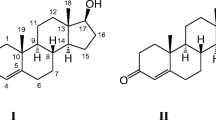Abstract
IN the course of work in this Laboratory on the nitrogen metabolism of mould fungi, it has frequently been observed that much less than the total amount of nitrogen supplied initially in the medium in the form of nitrate or ammonium salt is recovered in the fungus mycelium, although a high level of readily assimilated carbohydrate is present in the culture medium. Similar results have been obtained by other workers1; but it is not clear whether they are to be explained by incomplete assimilation of the nitrogen source or by the formation by the fungus of complex nitrogen compounds which either remain in, or are excreted into, the medium. A quantitative study of the uptake of inorganic nitrogen by fungi was therefore undertaken, using in the first place a strain of Scopulariopsis brevicaulis.
Similar content being viewed by others
References
Steinberg, R. A., J. Agric. Res., 58, 717 (1939).
Hockenhull, D. J. D., J. Exp. Bot., 1, 194 (1950).
Dietzel, E., Behrenbruch, H., and Eucken, M., Arch. f. Mikrobiol., 15, 179 (1950).
Strauss, B. S., Arch. Biochem., 30, 292 (1951).
Author information
Authors and Affiliations
Rights and permissions
About this article
Cite this article
MORTON, A. Formation of Extra-cellular Nitrogen Compounds by Fungi. Nature 168, 333–334 (1951). https://doi.org/10.1038/168333a0
Issue Date:
DOI: https://doi.org/10.1038/168333a0
- Springer Nature Limited
This article is cited by
-
�ber die Einwirkung von Humins�uren auf das Wachstum einiger Penicilliumarten
Archiv f�r Mikrobiologie (1957)
-
Ver�nderungen einfacher aminostickstoffhaltiger Substanzen in Mycel und Kulturmedium w�hrend des Wachstums von Streptomyces spec.
Archiv f�r Mikrobiologie (1956)
-
�ber die antagonistische Beeinflussung von Wachstum und atmung bei einigen h�heren Pilzen
Archiv f�r Mikrobiologie (1953)





